The Practical Applications of Head-Mounted Displays for Industrial and Business Use and The Pros and Cons of Head-Mounted Displays
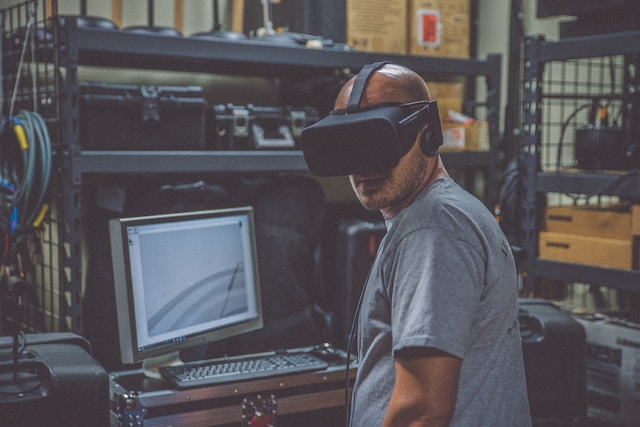
Introduction
Head-mounted displays (HMDs) were once only a concept found in science fiction, but in recent years, they have become a practical reality with practical applications in various industries. These devices have gained immense popularity due to their ability to provide an immersive visual experience and improve efficiency and productivity in various settings.
Further, HMDs are very useful devices that allow people to watch media and perform tasks using virtual reality (VR). Many people like wearing a VR device because it allows them to explore the world around them. A few years ago, these devices were only available in the form of 3D glasses.
By exploring this article, you guys can gain a better understanding of how HMDs can be utilized in different industries and weigh the advantages and disadvantages of their implementation.
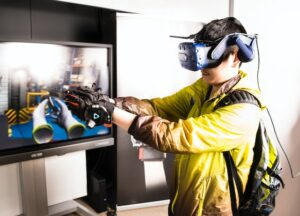
What are Head-Mounted Displays?
Head-mounted displays (HMDs) are wearable devices that can be mounted on the user’s head to provide a visual experience that surrounds the user’s field of view.
Additionally, These devices consist of a small display screen, which is usually placed in front of the user’s eyes, and a system to track the user’s head movements. The display screen can be used to show various types of content, including text, images, videos, and even virtual reality simulations.
Further, HMDs can be used for various purposes, including training and simulation, maintenance and repair, remote assistance, and design and visualization. They offer an immersive experience and allow for hands-free operation, which can help improve efficiency and productivity in various industries.
Moreover, HMDs can be divided into two broad categories: tethered and untethered. Tethered HMDs require a separate tracking system that attaches to the user’s head. Untethered HMDs don’t require any additional hardware and can be used anywhere the user wants. These devices are designed to be portable and lightweight.

Practical Applications of Head-Mounted Displays for Industrial and Business Use
Training and Simulation
One of the most popular uses for HMDs is training. HMDs can be used to provide a safe and immersive training environment. These devices allow users to interact with various simulations and practice various scenarios. You can also use these devices for military training.
For example, soldiers can practice shooting drills while wearing a HMD. They can fire their guns at targets or enemies while wearing the device. They can also use them for other activities such as practicing their skills during high-altitude emergencies.
Moreover, Another important application of HMDs is in medicine. Doctors can use them to practice various procedures in a safe environment. They can also use them to simulate emergency situations that they may encounter. For instance, doctors can train using these devices to practice performing CPR.
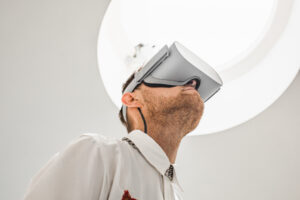
Maintenance and Repair
Head-mounted displays can also be used for maintenance and repair tasks. This is because they can be attached to computers. You can use head-mounted displays to show different kinds of information. This is very useful for maintenance technicians.
For instance, when a technician is working on a machine or tool, he can use a head-mounted display to view schematics, technical information, and other related data. If a technician has the right training and experience, he can use head-mounted displays for maintenance and repair tasks.
However, A technician might use a head-mounted display to troubleshoot problems with a computer, a device, or a machine. For example, a technician can use a head-mounted display to identify a problem on a circuit board. He can then look for tools that he might need to fix the problem.
Remote Assistance
HMDs can also be used for remote assistance in various industries. Today, companies all over the world use various technologies to help them manage their production processes and to make sure that their workers are doing the right things.
For example, a worker can use a computer to control the factory machines. In a healthcare setting, a surgeon can view medical procedures and surgeries on a computer monitor.
Even in the military, soldiers can connect to the Internet to look at videos and communicate with friends and family. Even a truck driver can receive real-time guidance to help him drive safely.
However, In manufacturing and production settings, companies can use HMDs to improve the quality and reduce the cost of their products. Workers can wear HMDs to receive real-time instructions from the company management. With a simple glance, they can be guided to perform specific tasks.
Design and Visualization
If you want to improve your design skills, it is possible to use head-mounted displays. These devices allow you to use your computer to work on 3D models of various things. You can use a head mounted display to design buildings, bridges, and other structures.
Additionally, You can create models of buildings and structures using computer software. This can help you to develop new ideas. You can also use these devices to design buildings and structures. You can also use the computer to draw 3D models.
Importantly, You can use these models to help you study and learn about different design aspects. As I mentioned above, you can use HMDs to draw 3D models. This can be a really helpful way to study and learn. You can even use them to simulate things that happen in real life. You can use them to test your design skills.
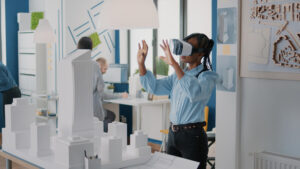
Pros and Cons of Head-Mounted Displays
Pros
Immersive Experience
Head-mounted displays help you to get immersed in a virtual world. You can interact with the content that you see through an HMD. You should wear an HMD when you are watching a movie, playing a game, or watching a virtual reality presentation.
Further, It is very helpful. It can help you to focus on the task at hand and enjoy the experience. A lot of people like wearing HMDs while they are playing games. This helps them to immerse themselves into the game. People who play video games may enjoy using an HMD because it helps them to be more immersed in the game.
Moreover, An HMD also allows you to interact with the content you see. For instance, you can move your head in certain ways to control the characters.
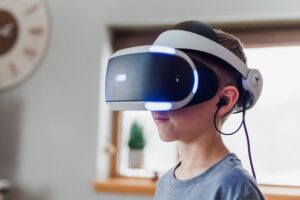
Hands-Free Operation
HMDs allow for hands-free operation, which can be useful in various industries where workers need to use their hands for other tasks. Most people are aware of the fact that HMDs are designed to provide a comfortable and effective way of working and communicating while performing tasks in a seated position.
Further, People wear HMDs to make sure they can concentrate on their work. Some people may have trouble using their hands to operate their phone, but they can use an HMD instead.
Moreover, using an HMD allows you to do work with your hands in a comfortable and efficient way. You may need to use your hands while operating a device, but it is more convenient to use an HMD instead.
Improved Efficiency and Productivity
The head-mounted displays help to improve efficiency and productivity because they make the work process faster and easier. They provide access to relevant information and reduce the amount of time spent on certain tasks.
Further, Some common uses of HMDs include emailing, accessing documents, browsing social media sites, and instant messaging. You can also use HMDs to find useful information quickly. These devices allow you to access your favorite news sources or search engines quickly.
Moreover, If you are trying to figure out how to do something, you can use HMDs to search for answers on your computer. You can search the web for the information you need. HMDs are also perfect for business purposes.

Enhanced Safety in Hazardous Environments
In industries such as construction, mining, and oil and gas, HMDs can provide workers with real-time information and warnings about potential hazards, increasing overall safety. HMDs are devices that can warn workers about possible dangers. The best way to protect the health and safety of workers is to install HMDs at all work sites.
Additionally, An HMD is an electronic device that is worn on the worker’s head or on the arm, and it has a built-in camera to monitor the surrounding environment.
Further, The camera allows the worker to see the work site while they are performing their jobs. The workers can use the HMD to check for obstacles and hazardous situations while they are working.

Cons
High Cost
One of the first things you need to know about HMDs is that they are expensive. They are not cheap. They usually cost hundreds of dollars. But this doesn’t mean that they can’t be used in smaller businesses. There are many ways to make your existing HMDs into affordable devices. It is possible to get HMDs for free.
However, you may need to pay for some accessories such as speakers and cameras. These accessories can also be purchased in a wide range of prices.
Further, It is important to find a way to make your HMDs affordable to the budget of your small business. Make sure that your company has a budget to spend on HMDs. This will make it easier to purchase them.

Discomfort and Fatigue
When you wear an HMD for an extended period of time, you might get tired. This is because you need to keep moving your eyes back and forth to change the views that you see. If you wear the device for too long, you may even get sick.
Additionally, The best way to avoid getting sick is to not wear the device for an extended period of time. You should try to stay up to about four hours per day, or even less. You may also want to wear the HMD to work. This can help you to see things better.
Further, You will need to practice this regularly to be able to maintain your vision for long periods of time. You should also consider the type of work you are doing when you are wearing the device.
Potential for Distraction and Reduced Situational Awareness
HMDs are becoming increasingly popular. However, they may be a potential danger to those wearing them. We don’t know whether the use of HMDs reduces situational awareness.
However, in some situations, they can reduce situational awareness. You may fail to detect hazards that are close to you. You may lose your situational awareness as well. People wearing HMDs may not be aware of their surroundings or of their actions.
For example, if you are driving while talking to someone, you may not notice a pedestrian walking across a street. Even though you are wearing an HMD, you may still feel safe.
Moreover, if you were in a situation where you needed to watch out for other vehicles, you may not be able to do that.
Conclusion
Head-mounted displays (HMDs) have become a practical reality with numerous practical applications in various industries. They offer an immersive visual experience, hands-free operation, and improved efficiency and productivity, making them ideal for industries such as construction, manufacturing, and healthcare.
However, they also come with some drawbacks such as high cost, limited field of view, discomfort and fatigue, and potential for distraction and reduced situational awareness.
Importantly, By weighing the pros and cons, businesses and industries can determine whether HMDs are the right solution for their needs and make informed decisions about their implementation.